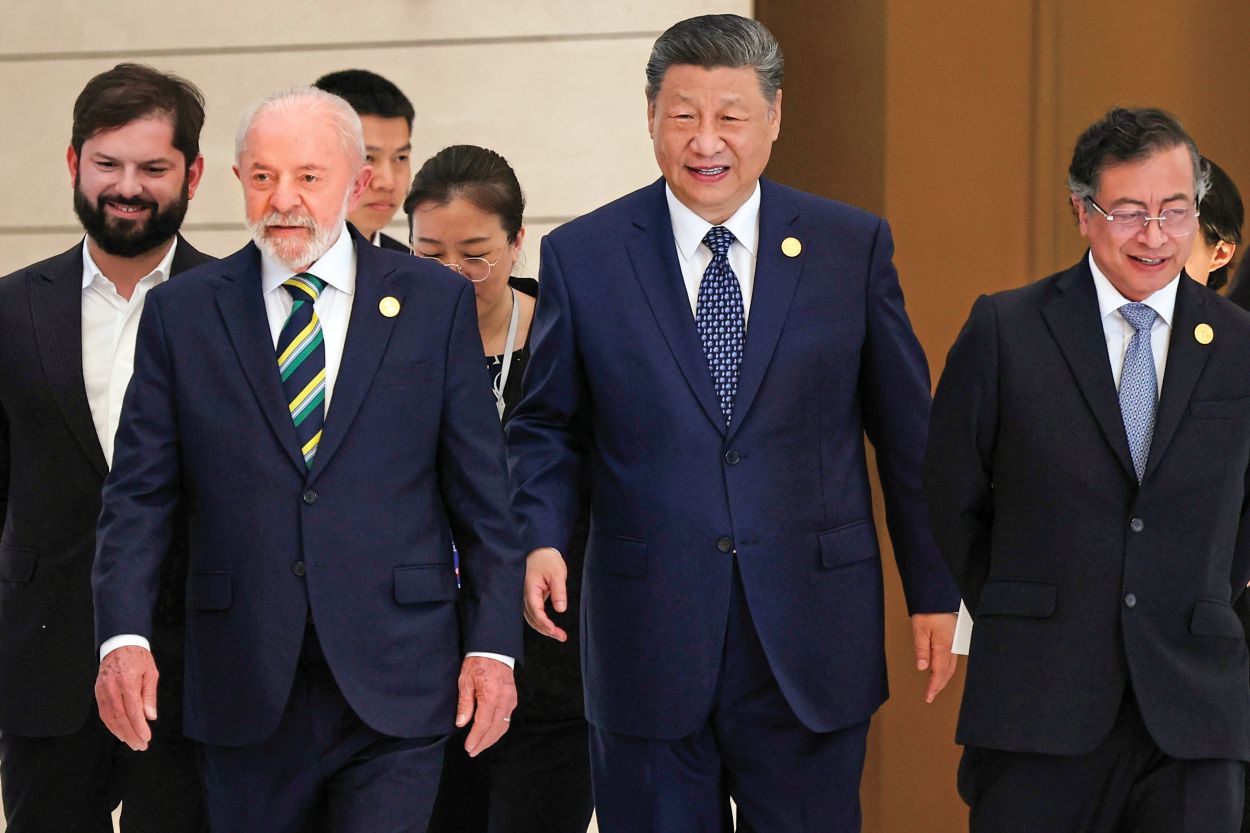The Asia-Latin America Technology Gap
The Asia-Latin America Technology Gap
When the presidents of Mercosur countries gathered in Córdoba, Argentina last week to celebrate Venezuela’s entry and discuss plans for the “great gas pipeline of the south,” a key item was missing from their discussion: technological innovation.
When the presidents of Mercosur countries gathered in Córdoba, Argentina last week to celebrate Venezuela’s entry and discuss plans for the “great gas pipeline of the south,” a key item was missing from their discussion: technological innovation. If Mercosur and the rest of Latin America are to better compete in the global marketplace and increase the technological advancement of their exports, both the public and private sectors must address the paltry state of scientific research and invention coming out of the region. High- technology advancements can boost the quality of a country’s exports – from copper to copper-produced microprocessors – and increase product value. Look at East and Southeast Asia. Both far surpass Latin America and its seven largest economies when it comes to technology innovation, a fact reflected in the differing levels of gross domestic product growth over the last 25 years. On the same track back in the 1960s, these Asian regions have lapped Latin America in the development race. Maybe it’s time to switch horses.
Creating the possibilities for future technological innovation starts with increasing public interest and education in science and technology. This first step is a fundamental building block for a society driven to not only improve current technologies but create new inventions. Looking at the number of science and technical journal articles in Latin America versus East and Southeast Asia, our hemisphere falls far short. According to the latest statistics from the National Science Foundation, in 2001, Japan – a country four times smaller than the entire Latin America and Caribbean region – published 57,420 such articles, nearly four times as many as the 16,045 printed in the Americas. Focusing on one of our region’s more prosperous countries, Chileans published just 1,203 articles on physics, biology, chemistry, mathematics, engineering and technology, etc., less than half that of a country one-quarter its size, Singapore. These staggering inter-regional variations point to a larger, systemic problem that should open the eyes of those who feel complacent with the dissemination of technology-related information. At their most basic, the numbers reflect the lack of good technical information for existing and aspiring scientists. But the low number of Spanish-language scientific publications also points to a longer-term problem: the inadequate level of attention given to scientific publishing that often – for tenure hungry researchers – is the greatest incentive for scientific inquiry and innovation.
Another strike against our hemisphere is the actual number of professionals engaged in the conception, creation or management of new knowledge, products, processes, methods, or systems. While the amount of R&D researchers does not necessarily forecast the quality and quantity of new ideas and innovations, just by the sheer numbers it demonstrates the human resources behind this important field. An interesting comparison is that of Mexico, a NAFTA member, with Mongolia, a landlocked country where 30% of its people are nomadic or semi-nomadic. According to 2002 statistics from the United Nations Educational, Scientific, and Cultural Organization (UNESCO), 681 Mongolians (per million people) are engaged in R&D activities, over one-third more than the 268 Mexicans. But, Mexico is in fact on top of the list in comparison to some of its neighbors. Colombia (81), Venezuela (220) and Chile (440) – other members of Latin America’s seven largest economies – also fail to catch up to Mongolia in turning out R&D professionals. The numbers are even more shocking when comparing Latin America with China, Korea and Japan. R&D research is perhaps the most important variable in building more developed societies. But with significantly fewer researchers than in Asia, Latin America faces an uphill struggle in its battle for economic modernization.
Lagging behind in journal articles published and number of researchers, it is not surprising that our hemisphere also generates less actual technological innovation compared to East and Southeast Asia. In 2002, the World Intellectual Property Organization (WIPO) found that Latin Americans filed 7,255 applications with a national patent office. Contrast that to South Korea, where despite it being over 11 times smaller than Latin America’s total 2002 population (545 versus 48 million), it registered 76,860 resident-filed patent applications.
But, don’t count out the Latin American horse quite yet. Education rates, as UNESCO’s measures by secondary school enrollment, remain quite high (87%) and steps towards greater integration may likely trigger a regional awakening regarding the importance of investing in technological innovation. One such example is Brazil’s achievements in the ethanol industry. Scientists can now plant genetically modified sugar that can be more efficiently converted to alcohol - an example of how naturally endowed raw materials can be used to generate technological improvements. One of the primary agenda items the next time hemispheric leaders convene should be ways to step up scientific research and innovation. A greater emphasis on science and technology in the schools may be the best place to start.
Chris Sabatini is the Senior Director of Policy at the Americas Society/Council of the Americas and Jason Marczak is a Policy Program Officer at the Americas Society/Council of the Americas.
ABOUT VIEWPOINTS AMERICAS
ViewPoints Americas is a publication of the Americas Society and the Council of the Americas. It helps Council member companies achieve their business goals by stimulating thoughtful debate on the most pressing issues facing Latin America. The positions and opinions expressed in this publication are those of the authors or guest commentators and speakers and do not represent those of the Americas Society and the Council of the Americas or its members or the Board of Directors of either organization. No part of this publication may be reproduced in any form without permission in writing from the Americas Society and the Council of the Americas.








